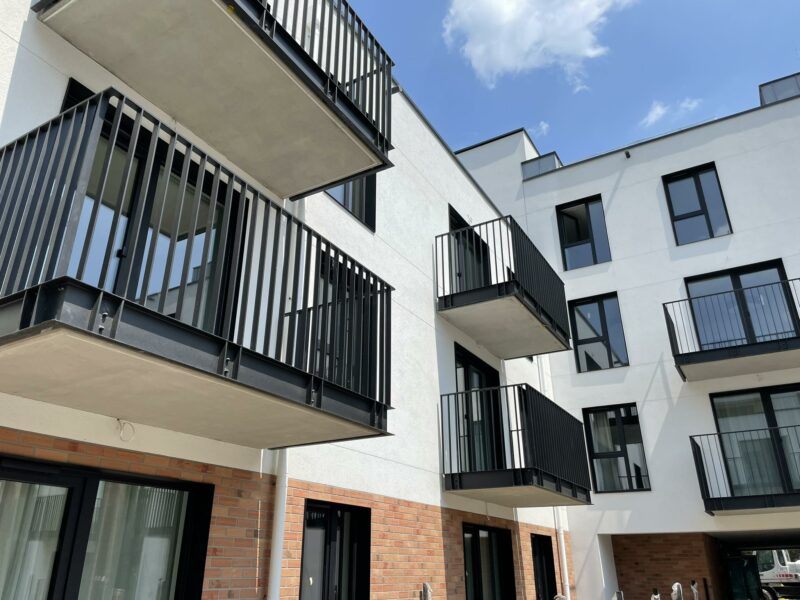July was the fourth month this year in Warsaw where the average price per square meter of apartments offered by developers remained unchanged. Similar price stability was observed in Poznań and the Upper Silesian-Zagłębie Metropolis. However, in Wrocław, the Tri-City, and Łódź, the average prices increased. Experts from RynekPierwotny.pl highlighted a unique trend in Kraków. Last year, Kraków was known for its record price hikes, but in July this year, it was the only major city where apartment prices decreased.
“For several months, I have been emphasizing that, despite rising land and construction costs, price stabilization for new apartments is possible even in the largest cities. Developers just need to believe that it’s worth building not only for the wealthiest clients,” said Marek Wielgo, an expert from RynekPierwotny.pl.
However, there is some uncertainty, particularly concerning the new “Start Housing Credit” program, which may not materialize. Additionally, banks have been approving fewer market-rate loans each month, with a significant drop in demand noted in May. It wasn’t until July that there was a noticeable improvement in loan applications.
The situation in Warsaw and Kraków also offers some optimism. Developers in these cities have started introducing more affordable housing options, which helped stabilize the average price per square meter of new apartments. July was the fourth month this year in Warsaw where the average price remained practically unchanged. In Kraków, a 1% drop in average prices was recorded in July, the first decrease in 2.5 years. Developers in Kraków and Warsaw were also the only ones to report an increase in apartment sales in July compared to June, which had been particularly weak in Kraków.
In other major cities, July saw a decline in new apartment sales. The most affordable units were the first to disappear from the market, so in places where developers did not deliver enough affordable options, the average price per square meter increased. This was particularly evident in Wrocław, the Tri-City, and Łódź. Although developers in Wrocław did increase the supply of new units, they were mainly targeting wealthier clients, resulting in a 2% rise in the average price per square meter. A similar increase was seen in the Tri-City and Łódź, where the higher average was largely due to the sale of lower-priced units, leaving more expensive ones in the market. For example, in Łódź, the share of apartments priced below 10,000 PLN per square meter shrank from 32% to 29% in just one month, while the share of units priced between 12,000 PLN and 15,000 PLN per square meter rose from 28% to 30%.
In the Tri-City, developers significantly slowed down new supply in July, with nearly three times fewer apartments introduced to the market than sold.
Fortunately, in Poznań and the cities of the Upper Silesian-Zagłębie Metropolis, similar trends did not affect the average price per square meter. In Poznań, prices have not increased for the third consecutive month, and in Silesia and Zagłębie, price stability has been maintained since the end of last year. The average price per square meter in these areas has only increased by 2% this year.
In the race for the title of this year’s price hike leader, Łódź is currently tied with Wrocław. Since the beginning of the year, the average price per square meter in these cities has risen by 9%. Poznań and Warsaw follow with a 6% increase, while prices in Kraków and the Tri-City have risen by 4% over seven months.
It is noteworthy that delaying a purchase decision in some of the largest cities does not necessarily lead to higher costs. This is not only due to increased competition forcing some developers to offer hidden price reductions, such as discounts or bonuses like storage spaces or parking spots. For instance, in Wrocław, where the average price per square meter rose the most in July, the number of available apartments increased by 11%. From a buyer’s perspective, it’s also important that the share of units priced up to 10,000 PLN per square meter did not decrease, nor did those in the 10,000-12,000 PLN per square meter range. However, the number of units priced between 12,000 and 15,000 PLN per square meter did shrink, while the supply of higher-priced units increased.
In Warsaw and Kraków, the number of available apartments also increased, but the price structure remained virtually unchanged. In contrast, in Poznań and the Upper Silesian-Zagłębie Metropolis, the share of apartments in the lowest price range, up to 10,000 PLN per square meter, slightly increased in July. However, when viewed over a longer period, it is clear that the price threshold has risen this year in all major cities.
In Kraków, apartments priced below 10,000 PLN per square meter have disappeared from developers’ offers, and finding such units in Warsaw is nearly impossible. Seven months ago, over half of new apartments in Łódź were priced below 10,000 PLN per square meter; now, they make up only 29% of the developers’ offers. Unfortunately, apartments in new developments are becoming more expensive due to factors often beyond developers’ control, primarily land prices and construction costs. Fortunately, these costs are no longer rising as rapidly as last year.
The decline in housing demand observed in recent months may force some developers to lower their prices. However, this trend may not last long. If demand for housing decreases and developers cannot reduce their construction costs, they may simply limit supply and target wealthier clients. This is why predictions of significant price drops following the COVID-19 pandemic or during the credit market downturn in 2022 did not materialize.
Source: https://managerplus.pl/ceny-nowych-mieszkan-w-najwiekszych-miastach-w-krakowie-po-25-roku-spadla-srednia-cena-m-kw-44746
